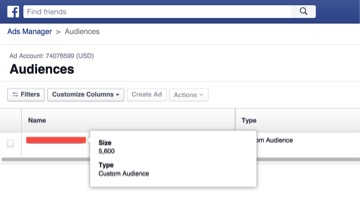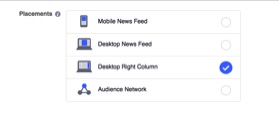Facebook Custom Audiences – Targeting Those Who Know You Best

While recently dealing with a lead gen client, I was confronted with an all-too-typical scenario: the CPCs and cost-per-lead were rising and lead volume was declining. With both cost-per-lead and volume being top priority, I was motivated to seek out ways to combat the issues.
After thoroughly reviewing the client’s Google and Bing campaigns, it seemed as if all best practices were being followed. While that’s normally a good thing, in this case it was particularly frustrating because it left me with very few optimization ideas. It seemed that there was only one thing I could do – seek out new sources of leads for the client beyond traditional search engines.
I’ve been down this road before and –while it would be great if expansion opportunities were always at my doorstep—there’s simply not always an opportunity that makes sense for the client. For instance, some opportunities are more branding-oriented and wouldn’t serve a lead gen client’s immediate needs, even if they do provide additional traffic. And many of these opportunities involve a great deal of research and set-up time, only to later learn that they don’t provide the targeting or quality that the client needs.
However, in the case of this particular client, we decided to give Facebook Custom Audiences a try. For those who aren’t familiar, Facebook Custom Audiences are Facebook ads that are targeted to people you already know. That already gives the advertiser an advantage in their marketing efforts, as the person viewing the ad is most likely familiar with the company and their product or service. To create the custom audience, the advertiser simply uploads a list of email addresses or phone numbers of people with whom they have had business contact. If those people are on Facebook, their ads will be served to them. With the use of a pixel, advertisers can also target people who have previously visited their web site.
Where I Began
The first step I took in the process was to ask the client for a list of phone numbers or emails from their database. Unable to provide emails, they provided me with a list of approximately 25,000 phone numbers. Initially, I was concerned that the number of phone number matches would be low, as I assumed that Facebook would have more email data to match up rather than phone numbers. To my surprise, that list came back with 4,600 matches. That was definitely enough data to make it worth building a campaign.

When creating your custom audience list, be sure to put some thought into which data you select. Make an effort to choose data that best aligns with the goals of your campaign. For example, you may want to look at where your users are within the purchase funnel or exclude previous customers when assembling your list. The more targeted your list is, the better your results will be.
Ads
Once the audience list was established, I moved on to the ad creation part of the campaign. Taking advantage of the fact that I knew exactly who the audience was, I tailored the messaging accordingly. That’s perhaps one of the best benefits of this campaign – the ability to create a specific message to your handpicked audience. Make sure that you consider your audience during this process and use ad copy that is most likely to resonate with them. Regarding images, I chose a variety of different ones to test across the campaign.
At this point, I also specified where I wanted my ads to run. This particular client wasn’t interested in appearing within the Newsfeed, so our campaign was limited to the Desktop Right Column of the page. However, there is certainly a great deal of additional exposure that is available on the desktop and mobile Newsfeed pages, so I definitely suggest giving it a try.

Just as with other platforms, I had to set a daily budget and had the opportunity to set up ad scheduling and bidding options. There are also several targeting options that you can employ, such as gender, location and interests.
After my campaign setup was complete, I crossed my fingers and launched the campaign. Like many other platforms, it took a few days for the campaign to ramp up, especially because I wasn’t utilizing the opportunity to advertise on the newsfeeds. However, when the first lead came in, it was immediately apparent that the quality was good. After pushing the lead through the client’s internal sales process, that lead became a customer for the client. Besides the general excitement of the lead conversion, another thing became apparent – the low cost-per-lead. As this platform is unlike the traditional PPC platforms, both CPCs and competition differ greatly. Therefore, this lead came in at a fraction of the cost of their PPC leads generated from traditional search engines.
Next Steps
Now that we have seen the ability of this platform to generate quality leads at low cost, there is an effort in place to upload more data and build a bigger custom audience. There is also an acceptance that this platform may never deliver the volume that the client receives from other platforms, but the quality and lower cost can certainly help offset the ever-growing costs of their overall marketing efforts. And, of course, we will continue to test new ad copy and images to keep our messaging fresh to our audience.
Though this turned out to be a valuable experience for the client, there was a bigger takeaway for me beyond that of Facebook Custom Audiences. This experience has also inspired me to go out and research other opportunities that might provide positive results for the client. As PPC marketers, we sometimes default to the usual marketing channels and save the other opportunities for later. However, more times than not, these opportunities get put to the side while we’re in pursuit of the bigger things. The diversity that Facebook and other platforms bring to the table is something that shouldn’t be overlooked. By utilizing these outlets, we diversify our marketing mix, possibly lower costs, and no longer put all of our eggs in one basket.



